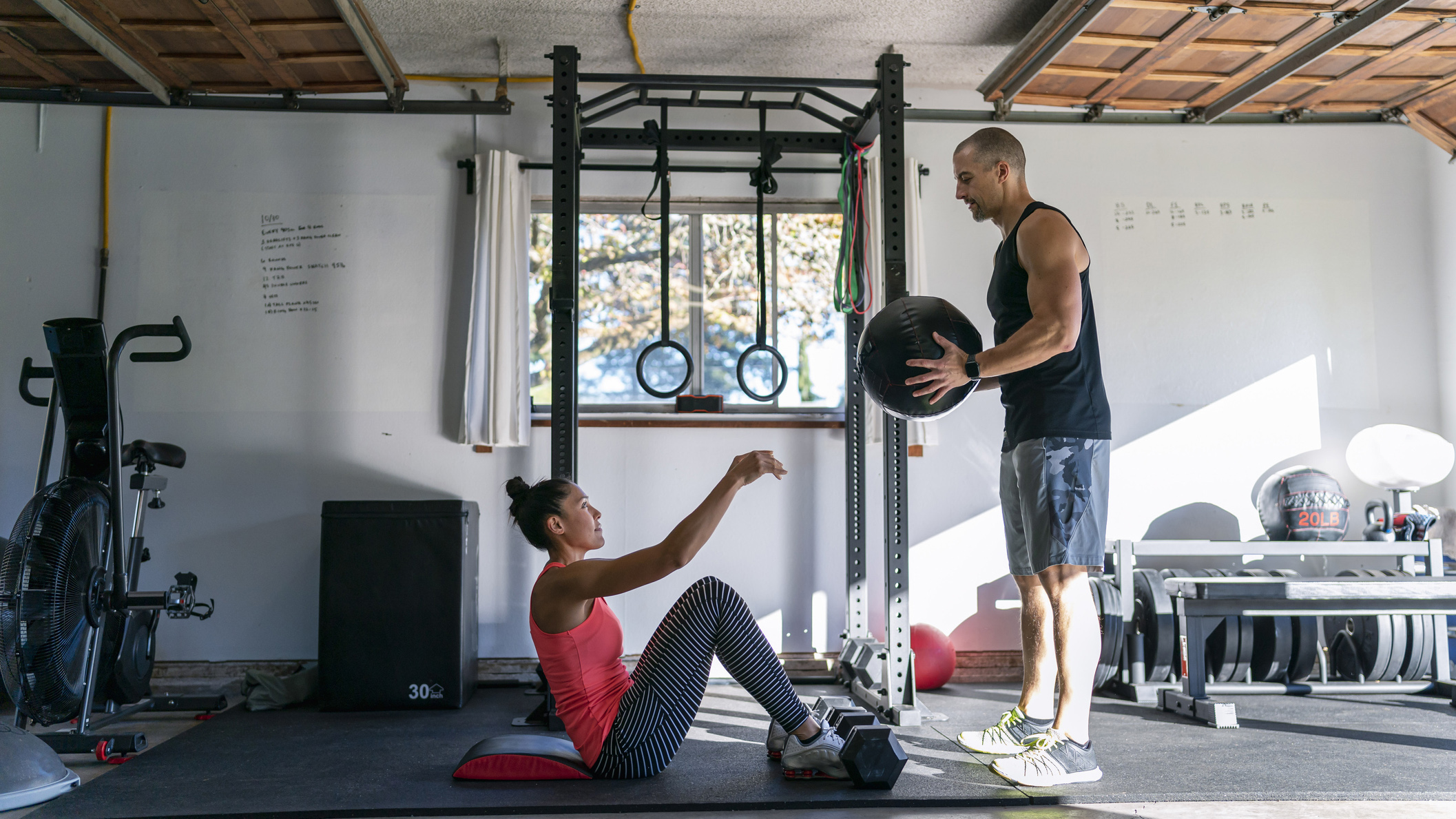

Home gyms are viewed by many as a luxury – not dissimilar to having an in-ground pool or building a home movie theatre. However, you can create a home gym for cheap if you follow a few simple tips and prioritise certain types of equipment over others. Don't give in to the hype; as a savvy home gym owner, you can save loads of money without compromising workout quality. Here's how.
We teamed up with Cooper Mitchell, founder of Garage Gym Reviews, to bring you this guide to building a home gym on a budget featuring the best insider tips. Coop and the GGR team have decades of combined experience doing in-depth reviews of home fitness equipment, assessing everything from functionality to value to the quality of construction.
I usually don't recommend navigating away from T3 to check out other websites for reviews but I'll make an exception here. The GGR team are an awesome bunch of people and they know a lot about home gym equipment. It pains me to admit but they know more about home gym equipment than I do. I often peruse their Instagram and Youtube for inspiration so make sure you check all of them out after you finished reading this article.
Ready to save money and get buff? Let's go!
What are the essential home gym equipment you need?
The essentials for a home gym vary depending on who you ask, but the pros at Garage Gym Reviews have narrowed down their top picks based on some broader categories. Most people benefit from having something from each of these areas:
- Free Weights
- Cardio Equipment
- Accessory Equipment
- Flooring and Storage
Here’s a look at the basics as well as the top budget-friendly picks. You don’t need all of these items to create a functional home gym, but having at least a few essentials will do wonders for your fitness.
Home gym essentials #1: Free weights
Free weights include barbells, weight plates, dumbbells, and kettlebells. “The reason we love free weights so much is because they’re extremely versatile,” Coop says. “You can do so much with a barbell and a pair of plates, from strength training to conditioning and everything in between. You can also target all muscle groups with free weights.”
Sign up to the T3 newsletter for smarter living straight to your inbox
Get all the latest news, reviews, deals and buying guides on gorgeous tech, home and active products from the T3 experts
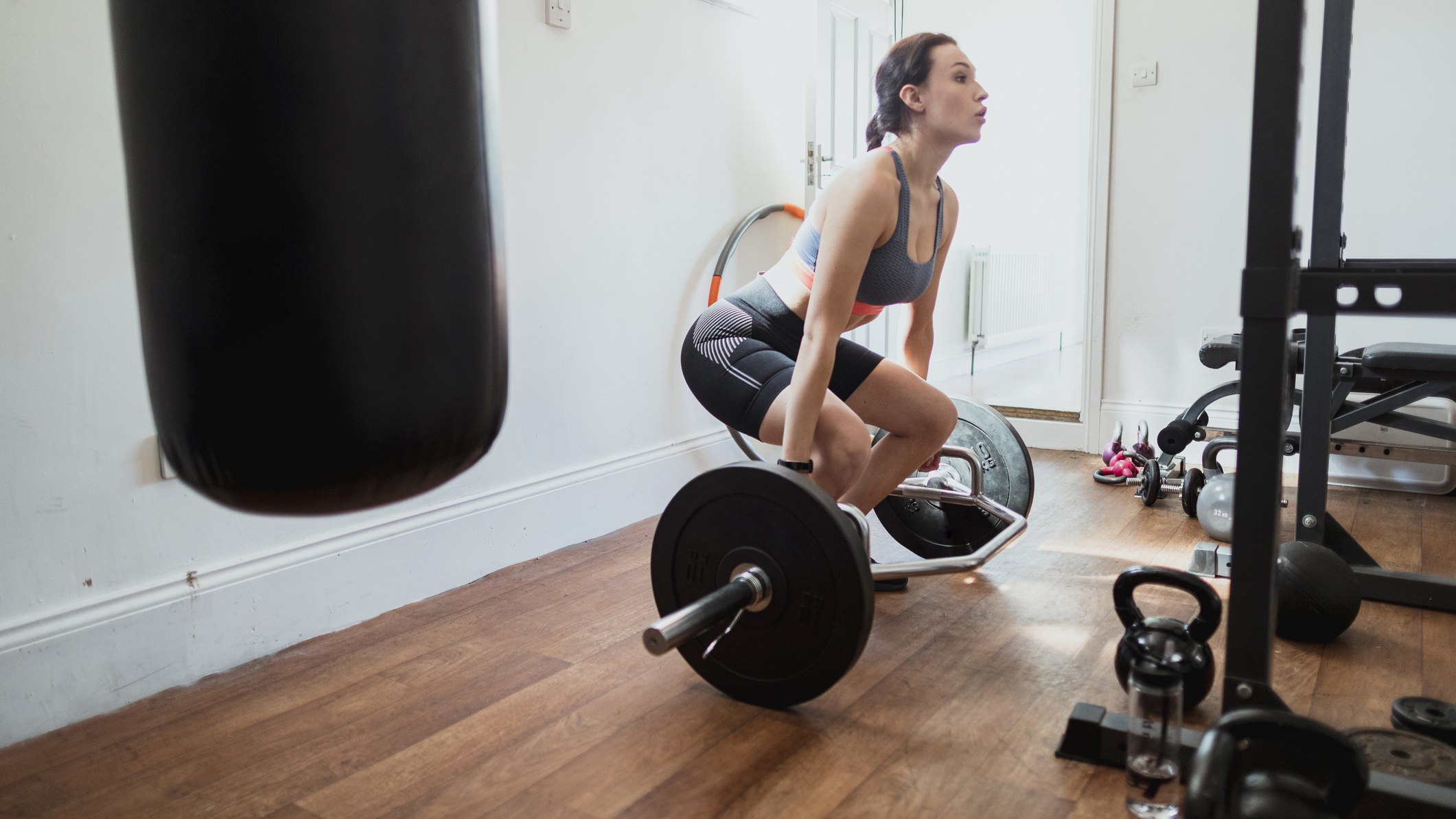
Barbell
Many consider the barbell the king of gym equipment. The best barbell is an essential piece of home gym equipment because it allows you to perform all compound movements, also known as multi-joint movements.
“Compound movements are proven to be more effective at building strength and muscle than isolation exercises, so you really get some bang for your buck when you buy a barbell,” says Amanda Capritto, certified personal trainer and staff writer at Garage Gym Reviews.
It used to be that the best barbells cost an arm and a leg. However, with so many fitness equipment manufacturers making barbells for home gyms now, you have plenty of options. “In fact, our team has created an entire guide to the best budget barbells, because nowadays, a good barbell doesn’t have to break the bank,” says Coop.
To get you started, here are a few factors you should look for in a good budget barbell:
- Tensile strength of at least 150,000 PSI
- Bushing or bearing rotation system
- A finish that protects the steel (like chrome or zinc)
- Knurling for grip
Weight plates
If you have a barbell, it won’t be much use without some weight plates! There are several types of weight plates out there, from rubber bumper plates to cast-iron plates to precision-machined steel plates.
The cheapest type of weight plate is typically iron, followed by crumb rubber. Either type will work for your home gym, depending on what type of exercises you do. “If you ever—and I repeat, ever—drop barbells, you need rubber plates,” Coop advises. Dropping a barbell with iron or steel weight plates is dangerous to your safety and your floors.
Squat Rack
To get the best use out of your barbell and weight plates, we recommend having a squat rack in your home gym. There are many types of squat racks, from simple squat stands to full-out power cages. The good news is that you needn’t splurge on a massive power cage with a ton of attachments to get great results in your home gym.
A simple free-standing squat rack will run you about $200 to $500, which is far cheaper than a full power cage, yet still offers versatility and functionality. If all you need to do is rack your barbell for squats, shoulder press, rack pulls, or bench press, the GGR team recommends the Fringe Sports Garage Series Squat Cage (or something similar); it will prove more than adequate.
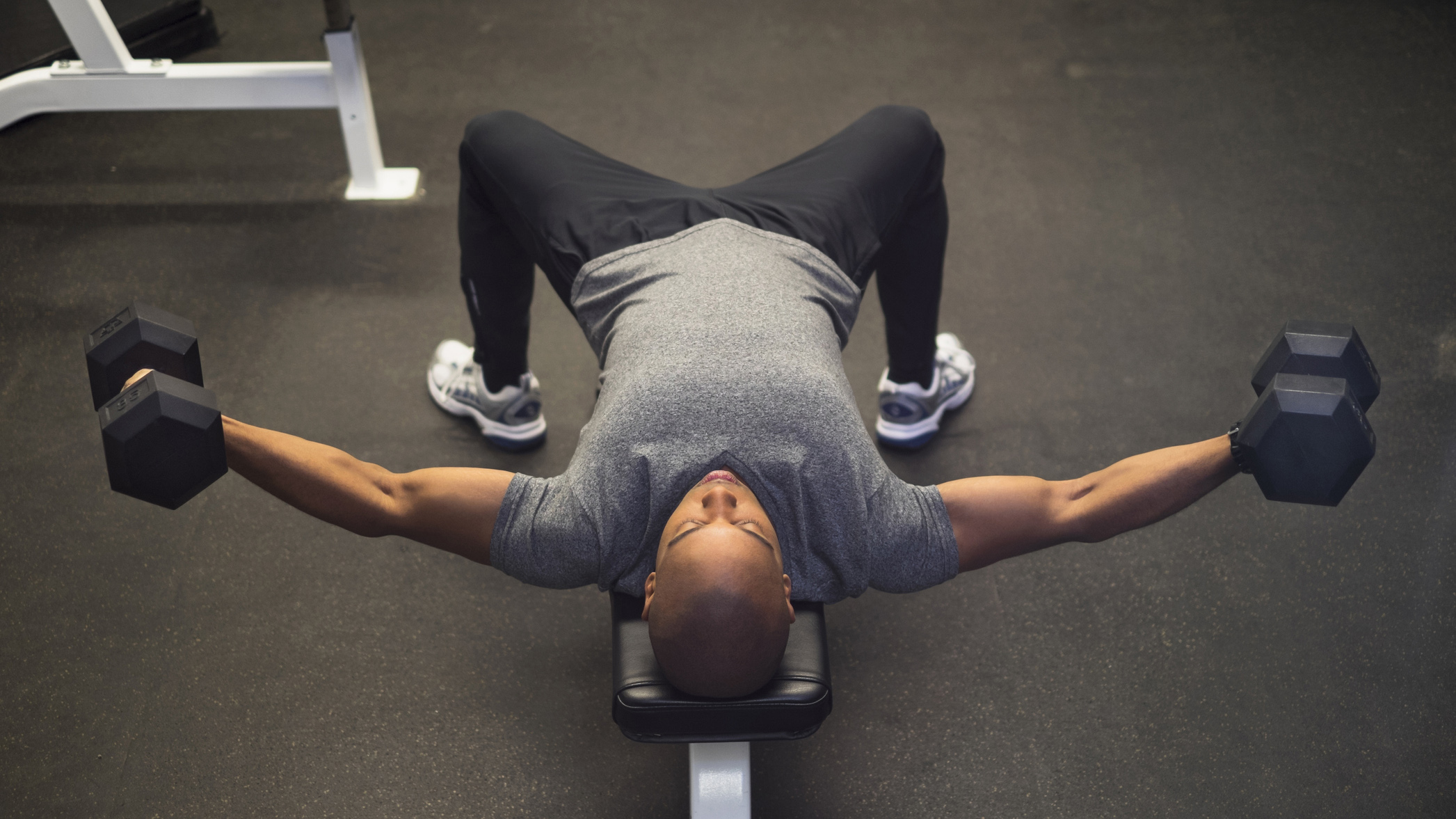
Weight bench
Most people consider a weight bench essential for a gym. The bench press is one of the most widely performed exercises and is a competition powerlifting move. But you can do much more with a weight bench than just bench press: hip thrusts, step-ups, decline push-ups, and single-arm rows are all examples of exercises you can do if you have a bench in your home gym.
“In my opinion, the best type of weight bench for the money is an adjustable bench,” Coop says. This is because you can do more exercises with an adjustable bench versus a flat bench or fixed incline bench. A good weight bench will have a vinyl-wrapped foam pad, be at least 12 inches wide, and support at least 700 pounds. With those specs, you can score a solid bench under the $300 price point. As a general rule, as the weight capacity increases, so does the price.
Dumbbells
“We love the versatility of dumbbells, and most of our Garage Gym Reviews staff implements dumbbells into their daily training,” Coop says. However, buying a set of dumbbells can be cost-prohibitive, not to mention space-prohibitive.
Enter: Adjustable dumbbells!
Adjustable dumbbells offer the functionality of a full dumbbell set while taking up a fraction of the space and costing a fraction of the price. Sure, the initial investment for what looks like one pair of dumbbells might feel outrageous. But when you realise that one pair replaces a full 5-70-pound set of fixed-weight dumbbells, it’s rather palatable.

Kettlebells
Likewise, for those on a budget, an adjustable kettlebell such as the Bowflex SelectTech 840 Kettlebell is a much better choice than a full set of fixed-weight kettlebells. Fixed-weight kettlebells range in cost from about $1.50 per pound to $2.50 per pound, which means you’re looking at a cost of $37.50 to $62.50 for a single 25-pound kettlebell.
Or, you could spend $150 or so on an adjustable kettlebell that ranges from 20 to 40 pounds. That sounds like a much better deal, doesn't it?
Home gym essentials #2: Cardio equipment
Truth be told, most cardio equipment is inherently expensive. The best treadmills, best exercise bikes, best ellipticals, and best rowing machines don’t typically come cheap. However, there are some budget-friendly options from a variety of brands, as long as you’re willing to sacrifice a few features.
You won’t score a Peloton Bike+ on a budget, but you can definitely find a Peloton alternative that gets the job done for less than $1,000 and sometimes even less than $800. Along the same lines, cheap treadmills and foldable exercise bikes can provide a decent cardio workout experience for much less than the top of the line cardio machines.
To find the most affordable cardio equipment that’s still enjoyable to use, look for basic conveniences such as water bottle holders, integrated displays or a media holder, built-in fans, and Bluetooth speakers. Once you edge into the high-tech territory, things get much more expensive: Cardio machines with HD touchscreen displays and integrated workout streaming tend to cost upward of $1,500.
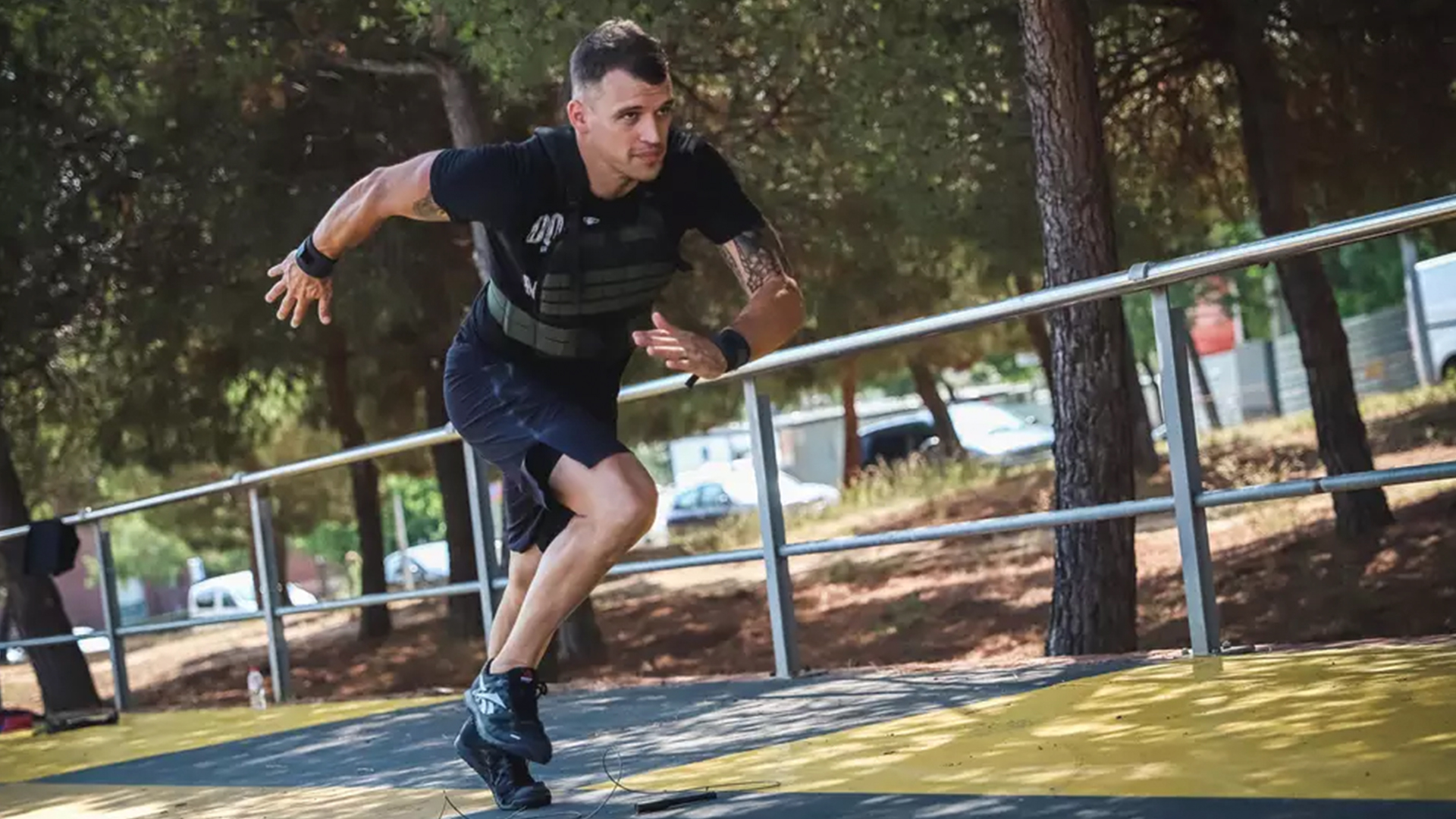
Home gym essentials #3: Accessory equipment
For the purposes of this guide, accessory equipment includes all of the nice-to-haves, such as:
- Weighted vests
- Pull-up bars
- Resistance bands
- Gymnastics rings
- Reverse hypers
- Glute-ham developers (GHDs)
- Jump ropes
- Climbing ropes
- Battle ropes
None of these items is absolutely necessary to have in a home gym, but they can certainly broaden your fitness horizons and challenge you in new ways.
“For people on a tight budget, my recommendation is to first focus on the home gym essentials, and when your wallet allows, start looking at accessories based on what best supports your fitness goals,” Coop says.
For example, if you want to become a great CrossFit athlete and you can choose one accessory item, pick a quality speed rope or a weighted vest, both of which are commonly used in CrossFit workouts.
Home gym essentials #4: Flooring and storage
Before you get too excited and go order your strength training equipment, look into flooring and storage options. This definitely isn’t the most exciting part about building a home gym, but it is necessary and not the place to skimp! Here’s how you can build a strong foundation for your home gym without forking out a ton of cash.
Rubber flooring
The team at Garage Gym Reviews loves horse stall mats. In fact, Tractor Supply horse stall mats top the site’s guide to the best home gym flooring. But, why lay down something that’s made for barns in your home gym? Because it’s truly the best value for the money.
Stall mats only cost about $30 to $50 per 4-foot-by-6-foot mat (depending on your locale) and they’re phenomenally durable and shock-absorptive. They are made for 1,000-pound animals, after all.
There are other gym flooring options, of course, but most serve the same purpose as stall mats yet cost exponentially more. Other less expensive options tend to be less durable or less shock-absorptive.
Weight plate and barbell storage
The most cost-effective option for weight plate and barbell storage is a weight tree. This type of storage typically has four to six pegs for Olympic weight plates, as well as vertical stands for two barbells. Weight trees run about $100 to $300, which might sound pricey upfront but is still cheaper than most storage options. You can also build a weight plate tree out of wood for an even less expensive option.
Other Storage
If you also decide to buy dumbbells, kettlebells, resistance bands, exercise or yoga mats, or other items for your home gym, you’ll need storage for those things, too. Typical steel gym shelving is expensive, although heavy-duty. But, if you only need storage for a handful of items, there’s really no need to purchase top-of-the-line, 11-gauge steel shelving or cabinets.
Case in point: Amanda Capritto, staff writer at Garage Gym Reviews, opted for a freestanding steel cabinet from Home Depot. For under $300, she was able to store everything aside from her weight plates and barbells, for which she uses a weight plate tree.
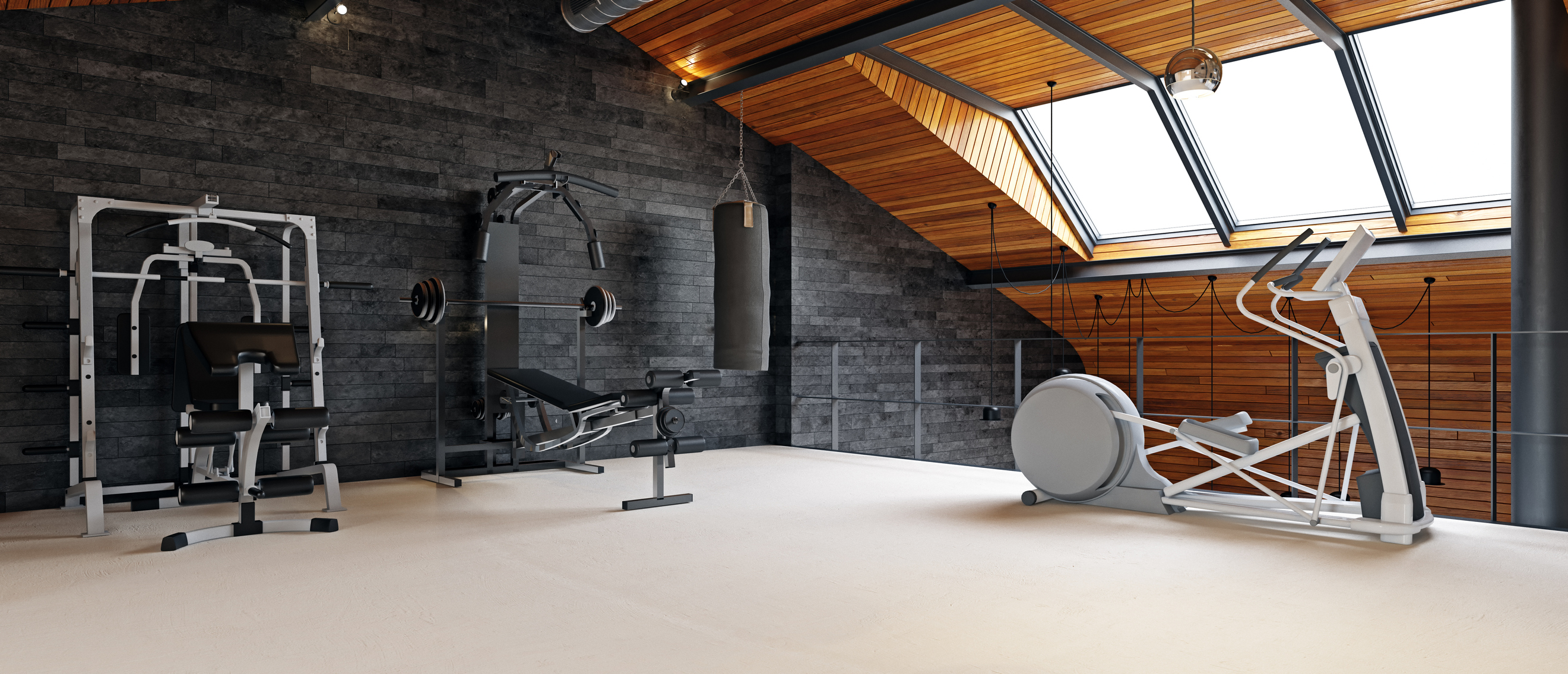
GGR's top tips on building a cheap home gyms
To wrap up, here are some final tips from Coop and the GGR team for building a home gym on a budget.
Stick to the Basics
If you really want the most bang for your buck, start your home gym with the essentials: a barbell and some weight plates. You can later add a squat stand, weight bench, dumbbells, and
kettlebells. Then, if your budget allows for more, look into accessories like weighted vests, as well as cardio equipment.
Buy Second Hand
Monitor sites like Facebook Marketplace and OfferUp for used home gym equipment. Amanda from Garage Gym Reviews found an entire gym setup on OfferUp for $1,000. For that much, she scored a squat cage, two Olympic barbells, more than 1,000 pounds of weight plates, barbell collars, parallettes, and spin-lock adjustable dumbbells.
Forego Name Brands (For Certain Things)
For some types of home gym equipment, the Garage Gym Reviews team stands by their recommendation to buy from top brands like Rogue Fitness and REP Fitness. But for other things, like flooring and storage, shop around for items that aren’t necessarily affiliated with the home gym industry. Sometimes, stuff is expensive solely because it’s marketed for home gyms and people view it as a luxury.

Matt Kollat is a journalist and content creator who works for T3.com and its magazine counterpart as an Active Editor. His areas of expertise include wearables, drones, fitness equipment, nutrition and outdoor gear. He joined T3 in 2019. His byline appears in several publications, including Techradar and Fit&Well, and more. Matt also collaborated with other content creators (e.g. Garage Gym Reviews) and judged many awards, such as the European Specialist Sports Nutrition Alliance's ESSNawards. When he isn't working out, running or cycling, you'll find him roaming the countryside and trying out new podcasting and content creation equipment.
-
 How to save money with an electric scooter
How to save money with an electric scooterLooking to save money on your commute? Here's why getting an electric scooter could be the answer
By Spencer Hart
-
 Tent buying tips: experts share how to get the most bang for your buck
Tent buying tips: experts share how to get the most bang for your buckPlanning a camping trip? Here are 6 top tips for how to get the most from your tent investment
By Ruth Hamilton
-

 Building a home gym? These 3 equipment swaps will make it way cheaper
Building a home gym? These 3 equipment swaps will make it way cheaperIt doesn't have to cost the earth to have your own pain cave. Do these three equipment swaps to save a truckload of cash
By Matt Kollat

